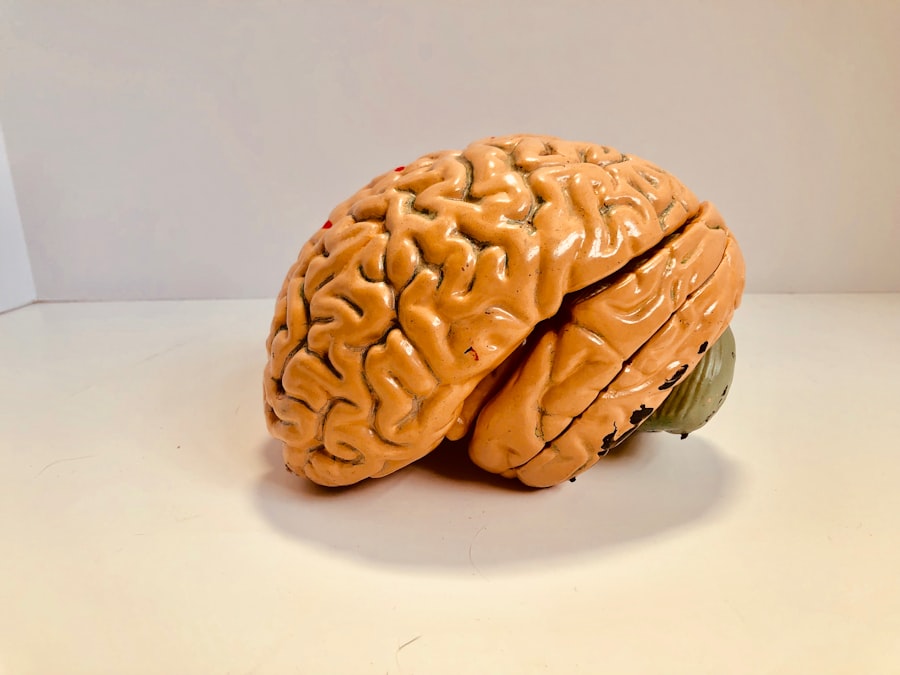
Language comprehension is a fundamental skill that underpins effective communication and learning. It encompasses the ability to understand spoken and written language, which is essential not only in academic settings but also in everyday interactions. The significance of language comprehension extends beyond mere understanding; it plays a crucial role in critical thinking, problem-solving, and the ability to engage with complex ideas.
For instance, a student who struggles with language comprehension may find it challenging to grasp the nuances of a literary text or to follow a lecture, ultimately affecting their academic performance and self-confidence. Moreover, language comprehension is vital in fostering social connections and cultural understanding. In an increasingly globalized world, the ability to comprehend different languages and dialects can bridge gaps between diverse communities.
This skill allows individuals to appreciate various perspectives and engage in meaningful dialogues. For example, a person who can comprehend multiple languages can participate in discussions about cultural practices, historical contexts, and social issues, enriching their worldview and enhancing their interpersonal relationships. Thus, the importance of language comprehension cannot be overstated; it is a cornerstone of effective communication and a gateway to broader knowledge and understanding.
Key Takeaways
- Language comprehension is crucial for effective communication and understanding of information.
- Strategies for improving language comprehension include active listening, asking questions, and summarizing information.
- Enhancing vocabulary can be achieved through reading, using flashcards, and practicing word usage in context.
- Techniques for improving reading comprehension include previewing the text, making connections, and visualizing the content.
- Using context clues such as synonyms, antonyms, and examples can aid in understanding unfamiliar words and phrases.
- Improving listening comprehension skills involves focusing on key points, taking notes, and asking for clarification when needed.
- Technology can be utilized to enhance language comprehension through language learning apps, online resources, and audiovisual materials.
- Practice and persistence are essential in improving language comprehension, as consistent effort leads to gradual improvement.
Strategies for Improving Language Comprehension
Active Reading Strategies
One effective strategy is active reading, which involves engaging with the text through annotations, summarization, and questioning. By actively interacting with the material, readers can enhance their understanding and retention of information.
Discussion and Critical Thinking
Another valuable strategy is to engage in discussions about the material with peers or mentors. Verbalizing thoughts and interpretations can clarify understanding and expose gaps in knowledge. Group discussions or study sessions provide opportunities for individuals to articulate their perspectives and hear alternative viewpoints, which can deepen comprehension. For example, a book club where members discuss themes, character motivations, and plot developments can significantly enhance participants’ grasp of the text.
Multimedia Resources
Additionally, incorporating multimedia resources such as videos or podcasts related to the subject matter can provide different contexts and reinforce comprehension through varied formats.
Tips for Enhancing Vocabulary

A robust vocabulary is integral to language comprehension, as it enables individuals to understand and express ideas more effectively. One practical tip for enhancing vocabulary is to engage in regular reading across diverse genres. Exposure to different writing styles and contexts introduces new words and phrases, allowing readers to encounter vocabulary in context.
For instance, reading fiction can expose individuals to colloquial expressions and idiomatic phrases, while non-fiction texts may introduce technical terminology relevant to specific fields. Keeping a vocabulary journal to record unfamiliar words along with their definitions and example sentences can further reinforce learning. Another effective method for vocabulary enhancement is the use of word games and puzzles.
Activities such as crossword puzzles, Scrabble, or word searches not only make learning enjoyable but also challenge individuals to think critically about word meanings and relationships. Additionally, utilizing flashcards for spaced repetition can aid in memorizing new vocabulary over time. For example, one might create flashcards with a word on one side and its definition or an example sentence on the other, reviewing them regularly to reinforce retention.
Engaging with vocabulary in playful yet educational ways fosters a deeper connection with language and enhances overall comprehension.
Techniques for Improving Reading Comprehension
| Technique | Description |
|---|---|
| Active Reading | Engaging with the text by asking questions, making predictions, and summarizing key points. |
| Visualization | Creating mental images of the text to aid in understanding and retention. |
| Summarization | Concise restatement of the main ideas and key details of a text. |
| Questioning | Asking and answering questions about the text to deepen understanding. |
| Context Clues | Using surrounding information to infer the meaning of unfamiliar words. |
Reading comprehension is a skill that can be honed through specific techniques designed to enhance understanding of texts. One effective technique is skimming and scanning before diving into detailed reading. Skimming involves quickly glancing through headings, subheadings, and introductory paragraphs to get a general sense of the content, while scanning focuses on locating specific information or keywords within the text.
This preparatory step primes the reader’s mind for what to expect and helps identify areas that may require closer attention. Another technique is the use of graphic organizers to visually represent information from the text. Tools such as mind maps or Venn diagrams can help readers organize their thoughts and identify relationships between concepts.
For instance, when reading about environmental issues, a mind map could illustrate the connections between causes, effects, and potential solutions. This visual representation aids in synthesizing information and enhances retention by allowing readers to see how different ideas interrelate. Additionally, summarizing sections of text after reading can reinforce understanding by requiring readers to distill information into their own words.
Using Context Clues to Aid Comprehension
Context clues are invaluable tools that assist readers in deciphering unfamiliar words or phrases within a text. By paying attention to surrounding words, sentences, or paragraphs, readers can infer meanings without needing to consult a dictionary constantly. For example, if a sentence describes a character as “gregarious” in the context of them enjoying large gatherings and being the life of the party, readers can deduce that “gregarious” likely means sociable or outgoing based on the context provided.
Additionally, recognizing different types of context clues—such as synonyms, antonyms, examples, or explanations—can further enhance comprehension. For instance, if a passage states that “the weather was inclement; it was stormy and unpleasant,” the word “inclement” can be understood through its synonymous relationship with “stormy.” Readers who develop the skill of identifying context clues not only improve their vocabulary but also become more adept at navigating complex texts with confidence.
Improving Listening Comprehension Skills

Active Listening
To improve listening comprehension, one effective strategy is active listening, which involves fully concentrating on the speaker rather than passively hearing their words. This can be practiced in various settings—such as during lectures, conversations, or audio materials—by focusing on key points and taking notes when appropriate.
Exposure to Diverse Audio Materials
Another technique for enhancing listening comprehension is engaging with diverse audio materials such as podcasts, audiobooks, or news broadcasts. Exposure to different accents, speaking styles, and subject matters can sharpen listening skills and improve overall comprehension.
Practicing Summarization
Practicing summarization after listening—by recounting main ideas or discussing them with others—can further solidify understanding and retention.
Utilizing Technology to Enhance Language Comprehension
In today’s digital age, technology offers numerous resources that can significantly enhance language comprehension skills. Language learning apps such as Duolingo or Babbel provide interactive platforms for users to practice vocabulary and grammar through gamified lessons. These applications often incorporate listening exercises that help users develop both speaking and comprehension skills simultaneously.
For instance, Duolingo’s use of audio prompts encourages learners to listen carefully before selecting the correct response from multiple choices. Moreover, online platforms like TED Talks or educational YouTube channels present opportunities for learners to engage with diverse topics while improving their comprehension skills. These resources often feature subtitles or transcripts that allow viewers to follow along visually while listening.
This dual engagement reinforces understanding by catering to different learning styles—visual learners benefit from seeing the text while auditory learners focus on hearing it spoken aloud. Additionally, many online courses offer interactive quizzes and discussion forums that encourage learners to apply what they have learned in real-time.
The Role of Practice and Persistence in Improving Language Comprehension
Ultimately, improving language comprehension is a journey that requires consistent practice and persistence. Regular engagement with reading materials—whether through books, articles, or online content—helps reinforce skills over time. Setting aside dedicated time each day for reading or listening activities can create a habit that fosters continuous improvement.
For example, committing to read for just 20 minutes daily can lead to significant gains in both vocabulary and comprehension over weeks or months. Persistence is equally important; learners may encounter challenges along the way that could discourage them from continuing their efforts. Embracing mistakes as learning opportunities rather than setbacks is crucial for growth in language skills.
For instance, if a reader struggles with understanding a particular text or concept, revisiting it after some time or seeking clarification from peers can lead to breakthroughs in comprehension. By maintaining a positive attitude toward learning and recognizing that mastery takes time, individuals can cultivate resilience that ultimately enhances their language comprehension abilities over the long term.
If you are interested in exploring more about language comprehension, you may want to check out the eBooks available at sersea.ink/ebooks.
Additionally, you may also find interesting stories related to language comprehension on sersea.ink/stories. These narratives can offer real-life examples and scenarios that showcase the complexities of language comprehension in various contexts. Visit sersea.ink to dive deeper into the fascinating world of language comprehension.
FAQs
What is language comprehension?
Language comprehension refers to the ability to understand and make sense of spoken or written language. It involves processing and interpreting the meaning of words, sentences, and larger units of discourse.
What are the components of language comprehension?
Language comprehension involves various components, including phonological processing (recognizing and understanding the sounds of language), semantic processing (interpreting the meaning of words and sentences), syntactic processing (understanding the grammatical structure of sentences), and pragmatic processing (interpreting language in context).
How does language comprehension develop in children?
Language comprehension develops in children through exposure to language and interaction with caregivers and peers. It progresses from understanding simple words and phrases to comprehending more complex sentences and discourse. Factors such as language input, cognitive development, and individual differences can influence the development of language comprehension in children.
What are some common difficulties in language comprehension?
Some individuals may experience difficulties in language comprehension, such as specific language impairment, aphasia, or other communication disorders. These difficulties can affect various aspects of language processing, including understanding vocabulary, grammar, and discourse.
How is language comprehension assessed?
Language comprehension can be assessed through various methods, including standardized tests, informal observations, and language samples. These assessments may evaluate a person’s ability to understand spoken and written language, as well as their comprehension of different linguistic components such as vocabulary, syntax, and pragmatics.



